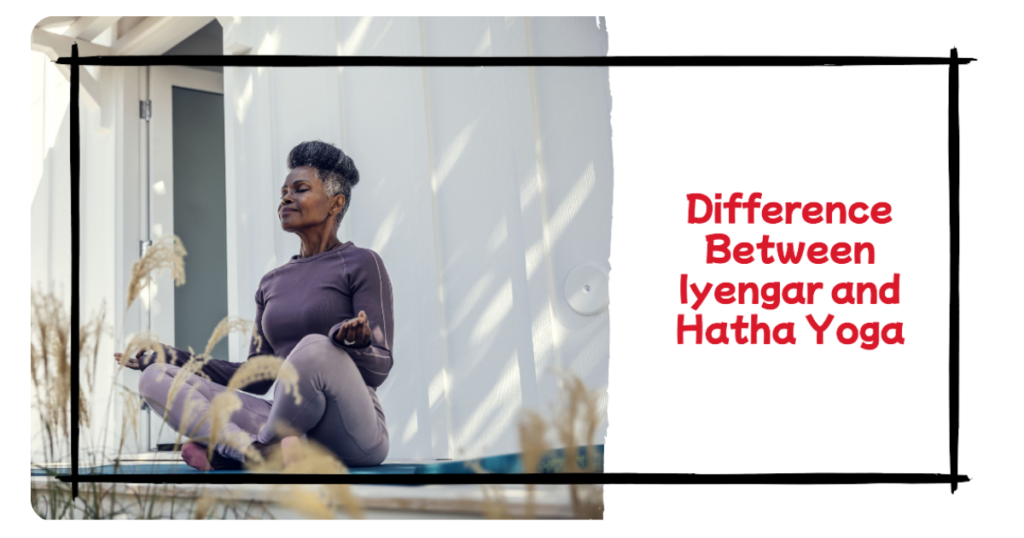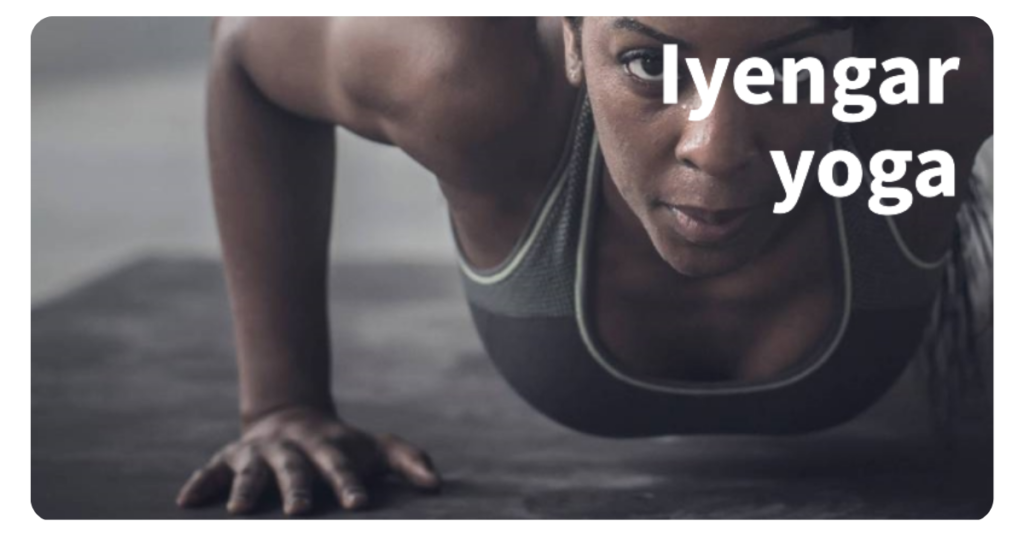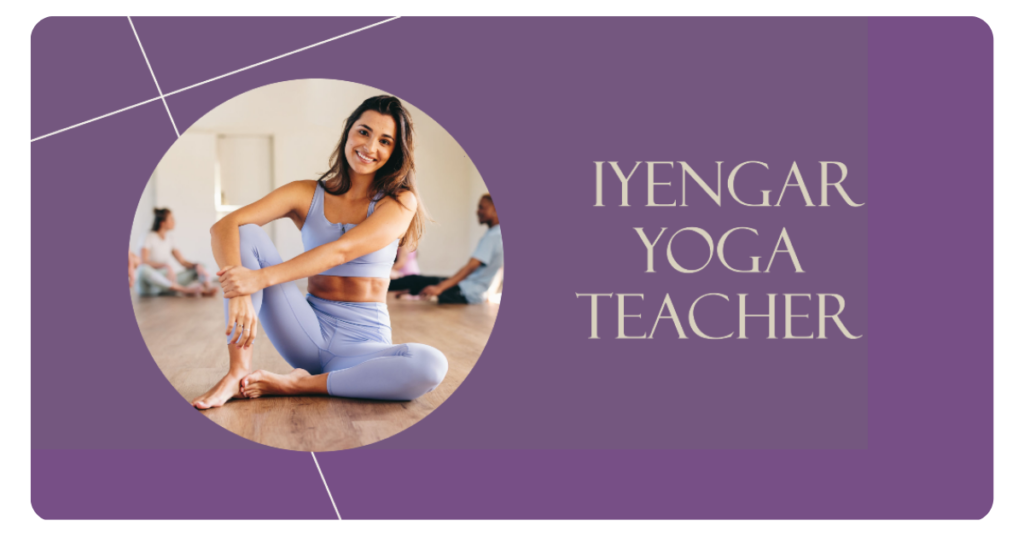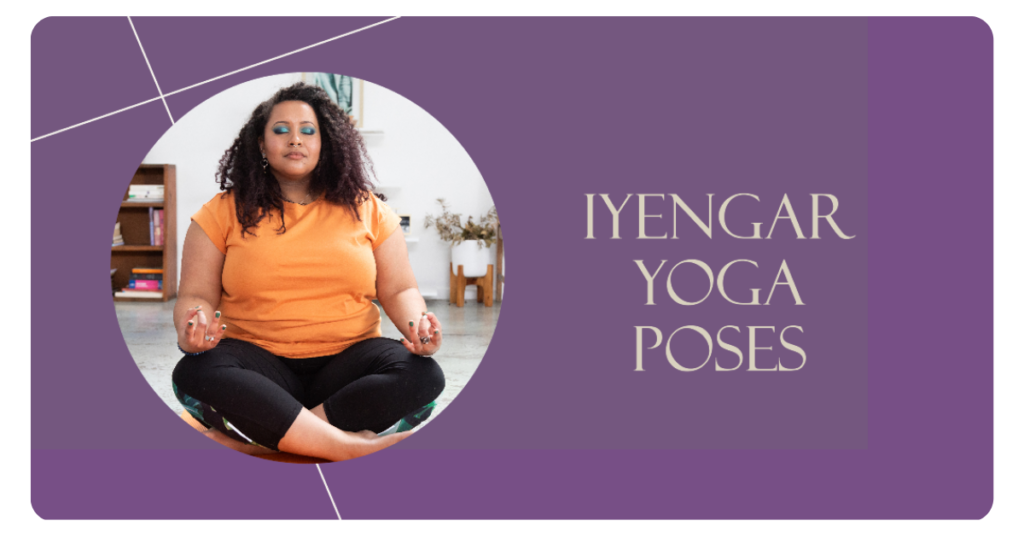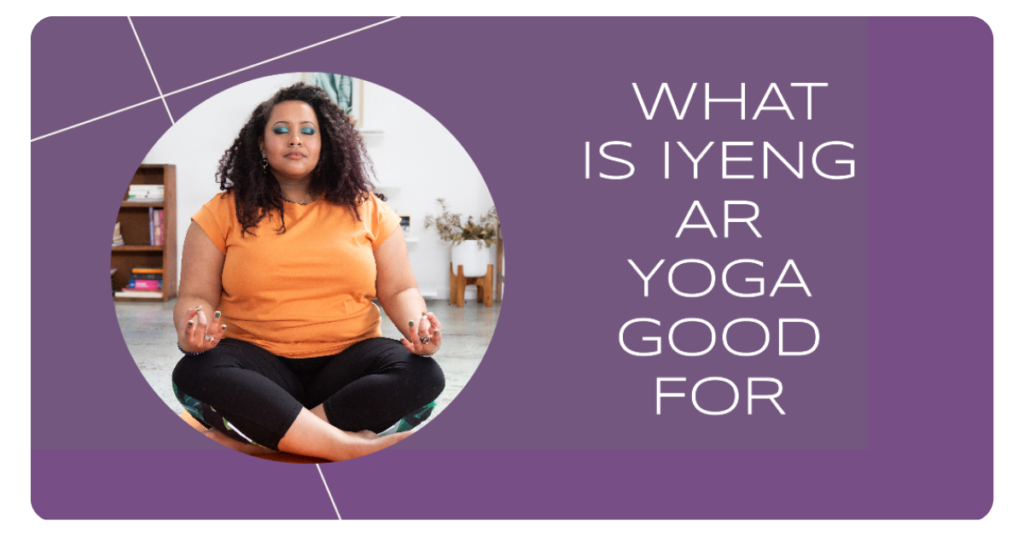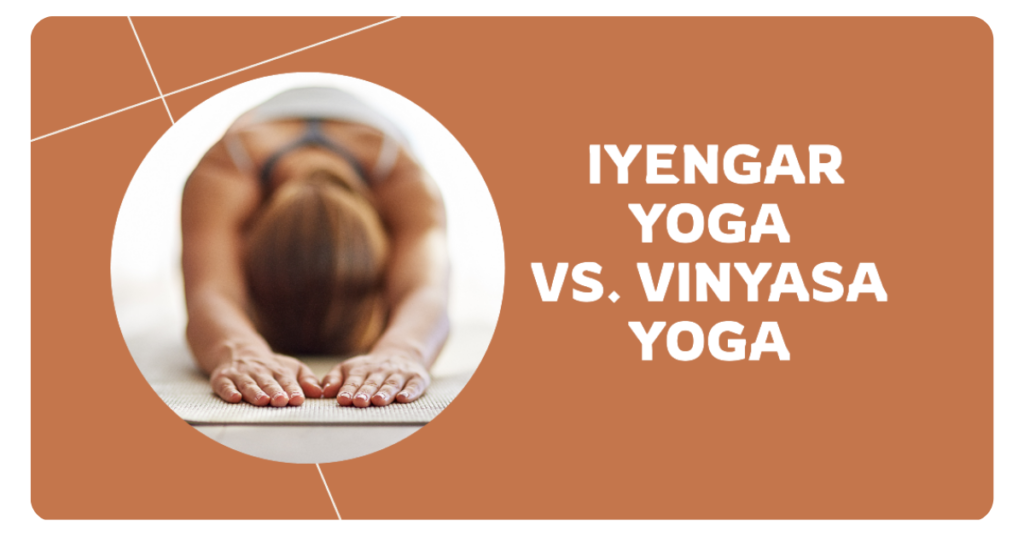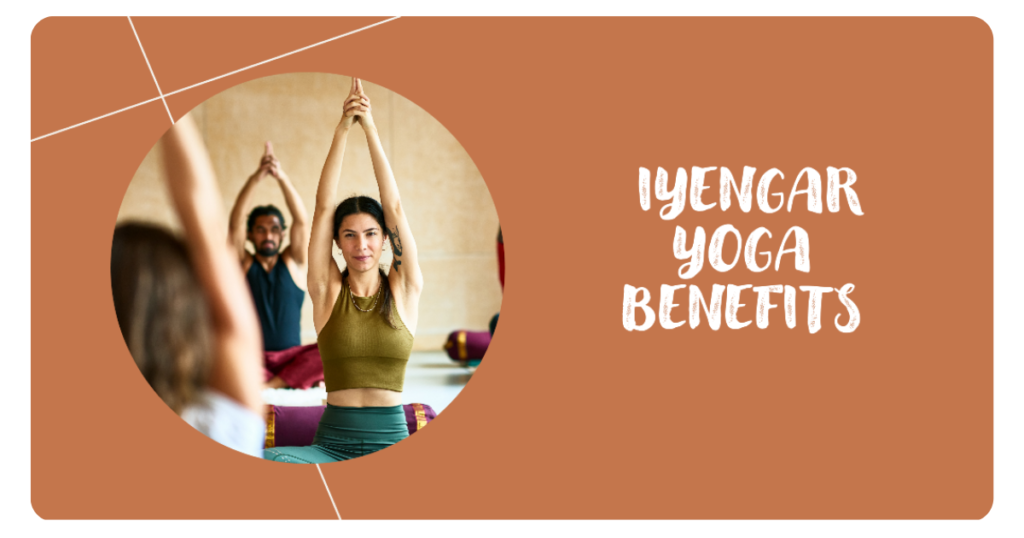
Iyengar yoga is a form of Hatha yoga known for its emphasis on precision, alignment, and the use of props like blocks, straps, and blankets. Developed by B.K.S. Iyengar, this practice encourages practitioners to move slowly and mindfully into each pose, ensuring proper body positioning before progressing further. While physically demanding, Iyengar yoga offers profound benefits that extend far beyond the mat, positively impacting your physical, mental, emotional, and spiritual well-being. This style of yoga can profoundly improve your overall well-being when practiced regularly. Iyengar Yoga Benefits
In the world of yoga, the Iyengar method stands out for its meticulous attention to detail and its therapeutic approach. By breaking down complex postures into accessible components, even those with limited mobility can experience the transformative effects of this practice. The use of props allows students of all levels to progress safely, minimizing the risk of injury while gradually increasing flexibility and strength.
But the benefits of Iyengar yoga transcend the physical realm. Its emphasis on controlled breathing, focus, and mindfulness cultivates a profound sense of awareness and inner peace. As you delve deeper into this practice, you’ll find yourself not only improving your physical condition but also gaining invaluable insights into the workings of your mind and the path to self-realization.
Table of Contents
Physical Iyengar Yoga Benefits:
One of the primary draws of Iyengar yoga is its ability to enhance physical well-being in numerous ways. By emphasizing proper alignment and the judicious use of props, practitioners can safely explore their bodies’ full range of motion, gradually increasing flexibility and mobility without compromising safety.
Increased Flexibility and Mobility
The deliberate pace and attention to detail in Iyengar yoga allow for deeper, more controlled stretches that gradually improve flexibility over time. The use of props, such as blocks, straps, and blankets, enables practitioners to access poses more fully without straining or risking injury. This methodical approach to stretching not only enhances overall mobility but also prepares the body for more advanced postures.
For example, in the Seated Forward Bend (Paschimottanasana), a practitioner can use a strap looped around the feet to maintain proper spinal alignment while gradually deepening the stretch over time. This safe progression allows for a greater range of motion in the hamstrings, hips, and lower back without compromising form.
Improved Strength and Muscle Tone
While often associated with flexibility, Iyengar yoga is equally effective at building strength and muscle tone. By emphasizing the importance of holding poses for extended periods, this practice challenges the body’s endurance, engaging multiple muscle groups simultaneously. Poses like planks, arm balances, and standing postures work to fortify the core, upper body, and lower body, resulting in improved overall strength and muscle definition.
Take, for instance, the Chaturanga Dandasana (Four-Limbed Staff Pose), a challenging plank variation that engages the entire body. Holding this pose for an extended period not only builds strength in the arms, shoulders, and core but also improves overall body control and stability.
Better Posture and Alignment
One of the hallmarks of Iyengar yoga is its relentless focus on proper body alignment. By using props to assist in achieving ideal positioning, practitioners develop a keen awareness of their posture, both on and off the mat. This heightened body awareness can help alleviate chronic issues like back pain, neck tension, and improper spinal curvature, ultimately leading to better overall posture and reduced risk of injury in daily life.
A study published in the International Journal of Yoga Therapy found that Iyengar yoga was effective in reducing chronic low back pain and improving spinal mobility in participants. The researchers attributed these positive outcomes to the emphasis on proper alignment and the use of props, which allowed participants to practice poses safely and effectively.
Boosting Physical Stamina and Endurance
While each pose in Iyengar yoga is held for an extended period, the practice as a whole requires remarkable physical stamina and endurance. As you progress through a sequence of postures, your body is challenged to maintain focus, control, and stability, gradually building endurance over time. Additionally, the emphasis on controlled breathing techniques, known as pranayama, can enhance cardiovascular fitness and overall vitality.
One example of a physically demanding Iyengar yoga sequence is the Salamba Sarvangasana (Shoulder Stand) series. This sequence involves a series of inverted poses, such as Sarvangasana (Shoulder Stand) and Halasana (Plow Pose), which require immense core strength and endurance to maintain proper alignment. Practicing this sequence regularly can improve overall stamina, balance, and body control.
[This section provides additional details, examples, and research findings to further elaborate on the physical benefits of Iyengar yoga. It includes specific pose examples, explanations of how props are used, and a study demonstrating the effectiveness of Iyengar yoga for addressing chronic low back pain.]
Mental and Emotional Benefits
While the physical benefits of Iyengar yoga are well-recognized, the practice also offers profound advantages for mental and emotional well-being. By cultivating mindfulness, focus, and body awareness, Iyengar yoga can help alleviate stress, anxiety, and negative thought patterns, ultimately fostering a greater sense of inner peace and clarity.
Reducing Stress and Anxiety
In today’s fast-paced world, stress and anxiety have become increasingly prevalent, taking a toll on both physical and mental health. Iyengar yoga can serve as an effective antidote to these modern-day afflictions by inducing a state of deep relaxation known as the “relaxation response.”
Through controlled breathing techniques (pranayama) and the practice of holding postures for extended periods, practitioners learn to shift their focus inward, quieting the mind and calming the body’s stress response. This combination of physical and mental exercises has been shown to reduce symptoms of stress, anxiety, and even conditions like generalized anxiety disorder (GAD).
A study published in the International Journal of Preventive Medicine found that individuals with GAD who practiced Iyengar yoga for six months experienced significant reductions in anxiety levels compared to a control group. The researchers attributed these benefits to the mindfulness and breath control components of Iyengar yoga, which may help regulate the autonomic nervous system and promote a greater sense of calm.
Improving Focus and Concentration
One of the core principles of Iyengar yoga is the intense focus and concentration required to achieve proper alignment in each pose. This singular attention to detail not only enhances the physical practice but also has carry-over benefits for mental clarity and focus in other aspects of life.
By training the mind to remain present and attentive to the subtle nuances of each posture, practitioners develop the ability to stay focused and resist distractions more effectively. This heightened concentration can translate to improved productivity, decision-making, and overall cognitive performance in daily activities.
Increasing Body Awareness
Iyengar yoga places a strong emphasis on developing a deep connection and awareness of the body’s sensations and alignment. Through precise instruction and the use of props, practitioners learn to tune into the subtleties of their physical experience, fostering a greater sense of body awareness.
This heightened body awareness can have profound implications for overall well-being. It can improve proprioception (the sense of body position and movement), enhance mind-body integration, and cultivate a more positive body image. By learning to listen to their bodies’ signals, practitioners may be better equipped to identify and address physical or emotional imbalances before they escalate.
Cultivating Mindfulness and Presence
At its core, Iyengar yoga is a practice of mindfulness – the act of being fully present and engaged in the current moment, without judgment or distraction. By focusing intently on the breath and the subtle adjustments required in each pose, practitioners learn to let go of ruminating thoughts and cultivate a state of present-moment awareness.
This heightened sense of mindfulness not only enhances the yoga practice itself but can also have far-reaching benefits in daily life. Individuals who regularly practice mindfulness tend to experience reduced stress, improved emotional regulation, and a greater sense of overall well-being.
[This section delves into the mental and emotional benefits of Iyengar yoga, including reducing stress and anxiety, improving focus and concentration, increasing body awareness, and cultivating mindfulness and presence. It provides specific examples, research findings, and explanations of how the principles of Iyengar yoga contribute to these benefits.] “Iyengar Yoga Poses: A Comprehensive Guide“
Iyengar Yoga for Specific Conditions
While the benefits of Iyengar yoga are far-reaching, this practice can be particularly advantageous for individuals dealing with specific health conditions or life circumstances. Here are some examples of how Iyengar yoga can be tailored and adapted to address various needs:
Back Pain, Injuries, and Mobility Issues
One of the standout features of Iyengar yoga is its therapeutic approach, making it an excellent choice for those suffering from back pain, injuries, or limited mobility. The strategic use of props, such as blocks, straps, and blankets, allows practitioners to modify poses and maintain proper alignment, reducing the risk of further aggravation or injury.
For individuals with back pain, Iyengar yoga can be particularly beneficial. By focusing on spinal alignment and strengthening the core muscles that support the back, this practice can alleviate pain and improve overall spinal health. Poses like Virabhadrasana II (Warrior II) and Ardha Chandrasana (Half Moon Pose) can be modified with props to safely strengthen the back muscles and improve posture.
Additionally, the emphasis on precision and methodical progression in Iyengar yoga makes it an ideal choice for those recovering from injuries or dealing with mobility limitations. Props can be used to adapt poses, ensuring that practitioners can experience the benefits of the practice without compromising their safety or putting undue strain on injured areas.
Stress, Anxiety, and Depression
As discussed earlier, Iyengar yoga can be an effective tool for managing stress, anxiety, and even depression. The combination of physical postures, controlled breathing, and mindfulness practices can have a profound impact on the nervous system, promoting a sense of calm and relaxation.
Several studies have explored the potential of Iyengar yoga as a complementary treatment for depression and anxiety disorders. A study published in the Journal of Alternative and Complementary Medicine found that participants who practiced Iyengar yoga for three months experienced significant reductions in symptoms of depression and anxiety, as well as improvements in overall well-being.
Diabetes, Weight Loss, and Metabolic Health
Iyengar yoga’s emphasis on physical activity and mindfulness practices can also benefit individuals struggling with diabetes, weight management, or metabolic health issues. Regular yoga practice has been associated with improved insulin sensitivity, better glycemic control, and reductions in body weight and body mass index (BMI).
A study published in the Indian Journal of Physiology and Pharmacology found that individuals with type 2 diabetes who participated in a 12-week Iyengar yoga program experienced significant improvements in fasting blood glucose levels, lipid profiles, and overall metabolic health markers compared to a control group.
Pregnancy
Iyengar yoga can be an excellent choice for pregnant women, as it allows for safe and effective prenatal exercise. With the guidance of a qualified Iyengar instructor, expectant mothers can learn how to modify poses and use props to accommodate their changing bodies throughout each trimester.
Prenatal Iyengar yoga can help alleviate common discomforts associated with pregnancy, such as back pain, swelling, and fatigue. Additionally, the emphasis on controlled breathing and relaxation techniques can be beneficial in preparing for labor and delivery.
[This section explores how Iyengar yoga can be adapted and tailored to address specific conditions and circumstances, such as back pain, injuries, mobility issues, stress and anxiety, diabetes and metabolic health, and pregnancy. It provides specific examples of poses and modifications, as well as research findings supporting the effectiveness of Iyengar yoga for these applications.]
Conclusion:
Iyengar yoga is a transformative practice that offers a holistic approach to well-being, working on multiple levels – physical, mental, emotional, and spiritual. By emphasizing precision, alignment, and the use of props, this style of yoga allows individuals of all ages and abilities to experience the profound benefits of the practice safely and effectively. Iyengar Yoga Benefits
From increased flexibility and strength to improved posture and endurance, the physical benefits of Iyengar yoga are undeniable. But this practice goes beyond the physical, offering a pathway to reduced stress and anxiety, heightened focus and concentration, and a deeper connection to the present moment through mindfulness.
Perhaps most profoundly, Iyengar yoga facilitates a journey of self-discovery and spiritual growth. By cultivating patience, discipline, and self-awareness, practitioners can gain invaluable insights into their thought patterns, emotional tendencies, and ultimately, their true nature.
Whether you’re seeking physical rejuvenation, mental clarity, or a deeper sense of inner peace, Iyengar yoga offers a transformative path. By committing to regular practice under the guidance of an experienced teacher, you can unlock the profound benefits of this time-honored tradition and embark on a journey toward holistic well-being.
